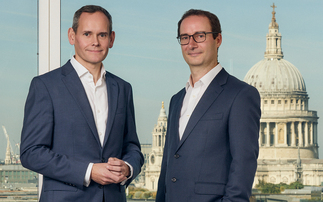
Paul Niven
1. How concentrated is the global stock market today and should investors be worried?
Markets are concentrated globally by a small number of very large companies. The US comprises around 65% of global market indices and the technology sector around 30%. When we add in communication services and consumer discretionary (to include the other sectors which include the large ‘disruptors') this number rises to around 50%.
Globally, the top ten companies by size comprise over 20% of global indices, with nine of these ten stocks being listed in the US and Taiwan Semiconductor Manufacturing Company (TSMC) the only one listed elsewhere. The Magnificent Seven group of stocks accounts for around one third of the US S&P 500 and the largest single stock (Nvidia now a greater than $4trn valued company) is over 7%.
There are several related risks that investors should consider, and which may give rise to concern.
- Concentrated indices have less diversification than indices or markets which have more widely spread exposure.
- The concentration in markets is focused around a small number of sectors and themes like technology and AI.
- Concentration of exposure can raise systemic risk for the overall market.
- It is often observed that concentration rises with investment bubbles, where valuations become stretched and markets become vulnerable.
2. Are concentrated markets riskier and a sign of lower long-term returns due to higher volatility of concentrated portfolios or do current valuations portend lower long-term returns?
Concentrated markets are riskier in terms of lack of diversification and increased systemic risks. It is also the case that prior periods of high concentration, such as in the dotcom boom and pre-global financial crisis, preceded a period of substantial declines in equity prices. Peak markets had been consistent with a period of speculative excess by investors.
Our sense is that valuations are full in areas which have driven markets to concentrated levels but are not at levels which indicate ‘irrational' exuberance. We believe that technological change, including application of AI, should deliver productivity improvements which will benefit corporate profits and profitability.
However, we also recognise that rising capital expenditure on AI related projects do present risks to shareholders regarding future returns. We do not believe that we are yet at valuation levels which will constrain further progress in equity markets.
As a collective, the Mag 7 is trading on a prospective PE of around 28x, which is rich, but needs to be considered in the context of strong (but variable) growth prospects. This group delivered year-on-year earnings growth of around 26% in their second quarter – well ahead of both consensus expectations and the wider market. They will, however, need to maintain that superior growth outcome to justify current valuations.
3. Does the US economy remain in a strong place? What other regions offer opportunities?
The US economy and stock market has been exceptional for a number of years – though equity performance relative to other regions has been less exceptional over the past 12-months for sterling investors, in part due to dollar weakness.
The US maintains several structural advantages at the macro and corporate level. Broad energy independence and costs contrast sharply with other regions, particularly Europe. At the corporate level, the US shows superior earnings delivery and profitability, with mega-cap tech stocks maintaining effective oligopolies across new technology areas, including AI.
The US equity market has delivered strong excess returns, and the dollar has typically acted as a safe haven during periods of crisis. Since 2012, the US dollar and US equities have outperformed globally, driven by superior earnings growth. The US delivered a 4% higher EPS compounded annual growth rate versus the rest of world over the past decade.
Our view is that the US economy and market remains in a strong place in relative terms, but that performance in equity markets should broaden geographically and within the US. There are few signs of exceptional positive geographic opportunities elsewhere on any case other than valuation terms, and more is required than this to deliver excess returns. That said, the outlook is brighter for Emerging Markets and longer term, Japanese corporate reform may yield positive results for shareholders.
4. Are actively managed funds a solution to concentration risk?
Actively managed funds can be a solution to concentration risk if the investment process can deliver excess returns against a market dominated by a small number of stocks, and driven by a particular theme.
They may achieve this by avoiding excessive exposure to the largest stocks in the indices and by finding alternative sources of return to capitalise on important themes which have either driven or are distinct from that which has resulted in market concentration.
Active management can adopt a flexible approach to portfolio allocation rather than simply buying the index and may well adopt a valuation-based approach, which can help to mitigate downside risks.
5. What levers do portfolio managers have to mitigate concentration risk?
We strongly believe that diversification is an important principle that investors should adopt.
Diversification in equity exposure is important even though it has been shown that only around 4% of US companies account for the majority of investment returns due to skewing equity market returns.
Indeed, most stocks lose money or do worse than short term bills (cash returns). Of course, if we could identify that small number of winning stocks in advance then we could forget the 96% of companies that do not add value. But these companies are the proverbial needles in the haystack.
It is tempting to form simplistic and extreme conclusions from this observation: either a) run highly concentrated portfolios which try to only include the winners (i.e., the needles); or b) just buy the haystack (the whole market) as it then guarantees inclusion of the winners – as well as all the losers.
The unfortunate reality is that if you hold a highly concentrated portfolio, you are more likely to not include the important winners, hence concentration is not a panacea; BUT we need to be active to deliver excess returns versus the general market.
So, we adopt a diversified approach in our equity allocation – meaning that we are more likely to capture winners and avoid losers. We also diversify across styles that have a positive payoff through time, such as quality, value, and growth/momentum.
We have a strong proof statement which supports our approach. The global equity component of our Universal MAP range has delivered an excess return greater than 2% per annum relative to market indices since we initially launched the range in November 2017.
6. Periods of increased concentration are nothing new. Is this time different?
There has been a loose correlation between periods of high concentration leading periods of market downturn, such as in the late 1990s and the bursting of the dotcom bubble. Bubbles are often formed by investors chasing a theme which has positive and demonstrable economic benefits to a point of excess.
This time, AI is a significant theme in the market and the wider economy, and we expect it will have a profound change across and within industries. It should boost overall economic productivity which would be good for the corporate sector and for owners of capital. So, there is a real and economically beneficial trend which is different in some ways than those seen historically.
AI has the potential to displace jobs in ways which prior technological changes have not and to have a far faster rate of adoption than prior technological innovation. In that sense, AI may prove to be even more disruptive than prior technological breakthroughs.
The large disruptors which dominate market indices have significant competitive advantages in their respective sectors but the landscape is shifting rapidly, large amounts of capital expenditure are being deployed to both fuel innovation and entrench competitive positions but it remains to be seen who the long-term winners from the AI revolution will be.












